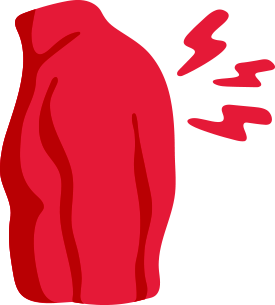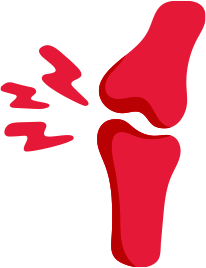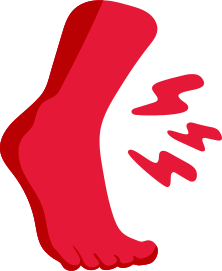What Is Lidocaine?
Lidocaine is a medication that numbs the area in which it’s applied. It is in a class of medications called anesthetics. When lidocaine is applied to the skin to relieve pain, it’s known as a topical analgesic (pain reliever).2
Lidocaine can come in many different dosage forms, such as:1
Creams
Gels
Ointments
Sprays
Patches
How Does Lidocaine Work?
Lidocaine can relieve many different types of pain by blocking pain signals sent from nerves in the skin. When the nerves are blocked, it creates a numbing sensation or a temporary loss of feeling.1
Unlike orally ingested pain relievers, such as acetaminophen (TYLENOL®), you can control how topical lidocaine targets your pain. When applied to your skin, it gives you pain relief only in the area that you apply it.
What Is Lidocaine Used For?
Topical lidocaine can be used to temporarily relieve pain. It can be
used on the following areas:3
Topical Lidocaine Benefits
Topical analgesics have several potential benefits. They include:4
Targeted pain relief — topical pain relievers such as lidocaine allow you to apply pain relief directly to the specific area where you need it the most
Favorable safety profile when used as directed – topical lidocaine generally has few side effects that usually do not require medical attention
Provides another form of pain relief other than oral medication — topical lidocaine is well recognized as an effective option for the management of acute pain5
How To Use Lidocaine
Lidocaine is a topical pain reliever that you apply directly to your skin. Use it exactly as your doctor instructs or as listed on the package.1
Unless otherwise instructed by your doctor, don’t apply topical lidocaine to irritated skin or skin with blisters, rashes, infections, or cuts.
You can apply a thin layer of lidocaine directly to clean dry skin.
Wash your hands before and after application to avoid numbness in your fingers.
How Lidocaine Compares To Other Topical Pain Reliever Ingredients
Topical pain relievers come in many forms (creams, gels, sprays, and patches) and there are several types available. Here’s how Lidocaine compares to some others:
Lidocaine — is a topical analgesic that provides numbing relief for your aches and pains by blocking the signals of the nerve endings in the skin.
Diclofenac sodium — an NSAID (non-steroidal anti-inflammatory drug) found in many rub-on treatments. When absorbed into skin, it works to reduce inflammation.
Methyl salicylate — (oil of wintergreen) has a minty smell and creates a cooling sensation when applied to skin acting as a distraction to pain points.
Capsaicin — a compound found in chili peppers that produces a warming sensation.
Menthol — (mint camphor) causes a cooling sensation and that feeling desensitizes the nerve endings. Like ice packs, menthol decreases arterial blood flow.
TYLENOL® PRECISE® Products With Lidocaine
Lidocaine is the primary active ingredient in TYLENOL® PRECISE® products. Learn more about our TYLENOL® PRECISE® external pain relief cream by clicking here.
Lidocaine and Safety
Lidocaine is a safe and effective treatment for the temporary relief of pain when its used as directed. However, it is important to note that there are warnings and precautions when using lidocaine such as:
For external use only.
Do not use in large quantities, particularly over raw surfaces or blistered area.
When using this product avoid contact with eyes.
Stop use and ask a doctor if condition worsens, symptoms persist for more than 7 days, or if symptoms clear up and occur again within a few days.
Keep out of reach of children. If swallowed, get medical help or contact a Poison Control Center right away.
Consumers should always read and follow the product label of any lidocaine product.





